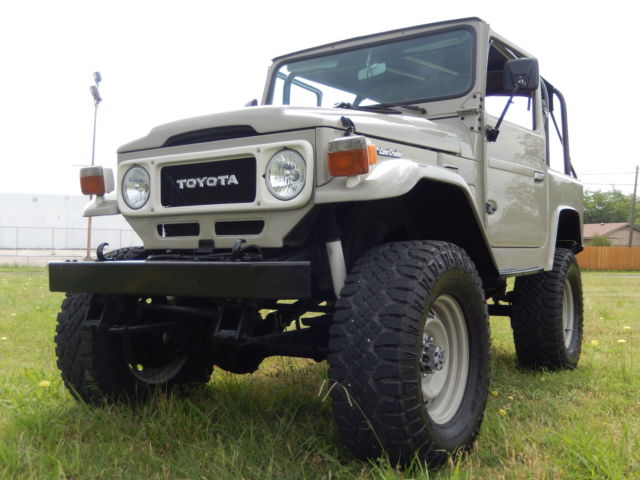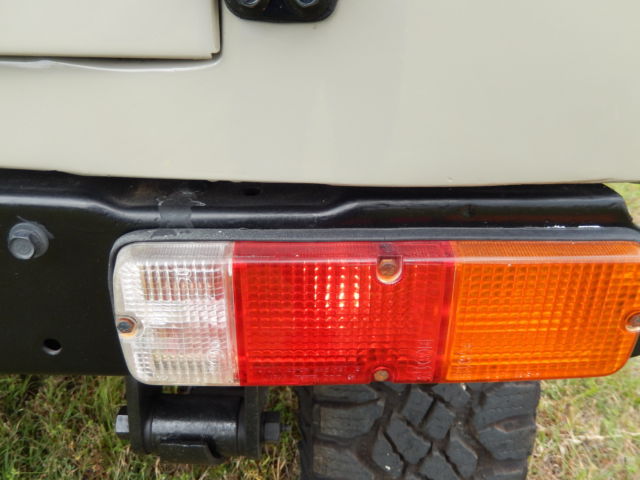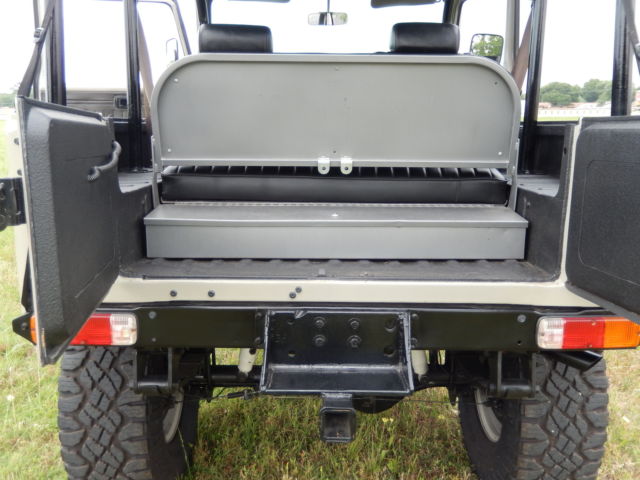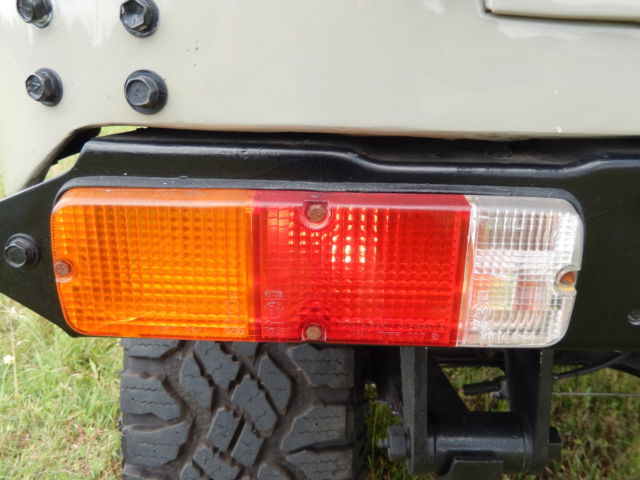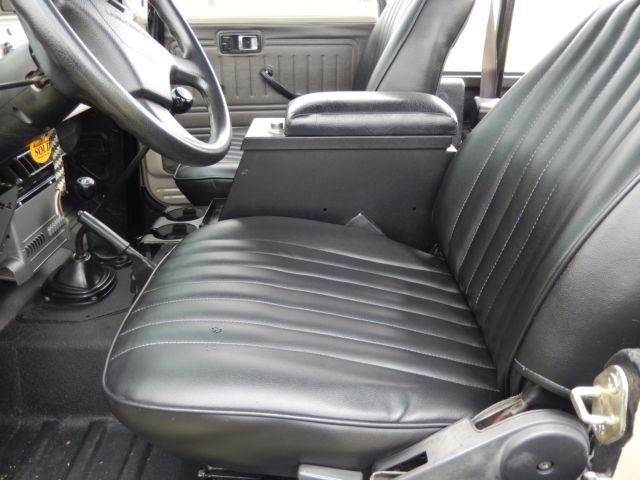1978 Toyota Land Cruiser Base Sport Utility 2-Door 4.2L
Technical specifications of Toyota Land Cruiser 1978
| Price: | - |
|---|---|
| Item location: | Mesquite, Texas, United States |
| Make: | Toyota |
| Model: | Land Cruiser |
| Type: | SUV |
| Trim: | Base Sport Utility 2-Door |
| Year: | 1978 |
| Mileage: | 23,400 |
| VIN: | FJ40284365 |
| Color: | Tan |
| Engine size: | 4.2L 4227CC l6 GAS OHV Naturally Aspirated |
| Number of cylinders: | 6 |
| Power options: | Headlights, Taillights, Signal Lights, 4 Speed Manual, 2F Transmission, Windshield Wipers |
| Fuel: | Gasoline |
| Transmission: | Manual |
| Drive type: | 4WD |
| Interior color: | Black |
| Safety options: | Seat Belts, Emergency Brake, Driver Airbag |
| Options: | Snorkel, Fan, Heater, (4) Goodyear Wrangler LT 315/70 R17, Lift Kit, Bar Doors, Spray Rhino Liner, Rollover Protection Bar, Soft Top, Center Console Storage Space, Rear Bench Seat Storage Space, Lockable Gas Tank Door, Leather Interior, Shock Suspension, Ventilation System, 4-Wheel Drive, Convertible, Leather Seats |
| Vehicle Title: | Clear |
| You are interested? | Contact the seller! |
Description
Welcome!This vehicle is an iconic symbol to behold and the greatest thing about this one in particular is that it is entirely original motor. Vehicle has undergone rigorous inspection by the best certified technicians and mechanics in the great State of Texas. A true barn yard find that was best described as being enclosed and covered with all original hardware.
After its purchase from a beloved friend the framework was put in place to recondition a number of its mechanics and physical shape as much as possible. A lot of hard work and dedication went into improving and bringing forth this vehicle to the condition that you see it now. The entire exterior body has been repainted to factory specifications as were the roll bar and addition of removable bar doors. There was even the application of a snorkel provided for the motor itself if ever required by its owner.
Inside the vehicle itself you will notice its authentic hand stitched leather interior with bucket seating. These seats are easily removable if desired and the rear bench seat provides a lockable storage space beneath. The center console of the vehicle between the front seats also provides a lockable storage space as well with authentic leather arm rest. On the passenger's side will also be another lockable storage space for whatever you may desire.
Much of the vehicles functionality is self explanatory with directions displayed across the front dash. Images and logos are shown on all the dials that you will see when riding in comfort.
Current mileage displayed on the vehicle odometer: 23,400 miles
A number of things that were replaced being:
-Electrical Systems
-Fan
-Heater
-Shock Suspension
-Tires
-Roll Bar
New applications being:
-Leather Interior
-Spray Rhino Liner
-Snorkel
-Bar Door Attachments
-(4) Goodyear Wrangler LT 315/70 R17
-Battery Core
-Soft Top
-Lift Kit
Factory Complements:
-Heater
-Horn
-Emergency Brake
-Fan
-Four-Wheel Drive
-Gas Gauge
-Manual Transmission - 4 Speed
-Odometer Display
-RPM Gauge
-Temperature Gauge
-Ventilation System
-Windshield Wipers
FJ History:
Appropriately, the FJ Land Cruiser formed the backbone of the Toyota brand and became the emissary of Japanese engineering and much of the world's first experience with Toyota. The FJ was decidedly a military vehicle at first--like the Jeep and Land Rover--but quickly spread worldwide as a fantastic method of transporting people or cargo in places that didn't have well-maintained roads (or any at all!) for uses as varied as farming to ambulances to deserts to rock climbing. After making it up to the 6th station of Mt. Fuji on a showcase run in 1951, the FJ captured the attention of not only groups like the Japanese Forest Service but also makers of Jeep. Successive FJ models morphed from the brusque military style to a more comfortable and functional ride with improvements like more room in the interior as well as softer springs.
Toyota's FJ series is positively famous for not breaking down--which is why you can still find authentic antique FJs all over the world in working condition (at the very least, you can find suitable samples for restoration). Since it's used for so many purposes, it seems almost fitting that there are nearly countless configurations in the FJ Series from wheelbase height to the type of covering for the roof and more. The Japanese approach to engineering critically rests on the relentless pursuit of perfection. It's not good enough to have the mentality of "If it ain't broke, don't fix it"; they would prefer that it never break at all. Why replace something when you can build it right the first time? Given that, it's no surprise that the quality and durability of the FJ's transmission and suspension is legendary. The leaf spring suspension is particularly worth mentioning: it's absolutely suited for a heavy vehicle like the FJ, spreading the weight around more evenly, plus it actually alleviates the need for additional weight from extra parts that you would need with coil suspension. The electrical system tends to survive just about anything you throw at it. It's truly unmatched in terms of reliability and superiority for cars of this era--especially when you consider the beating many FJs have endured over their lifetimes in conditions most vehicles can barely handle for a day of driving.
Written by The FJ Company
